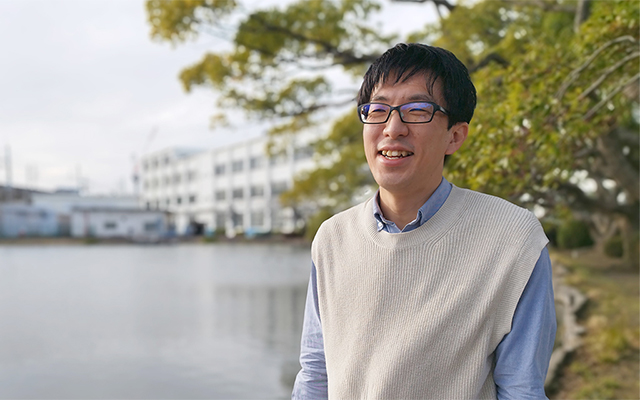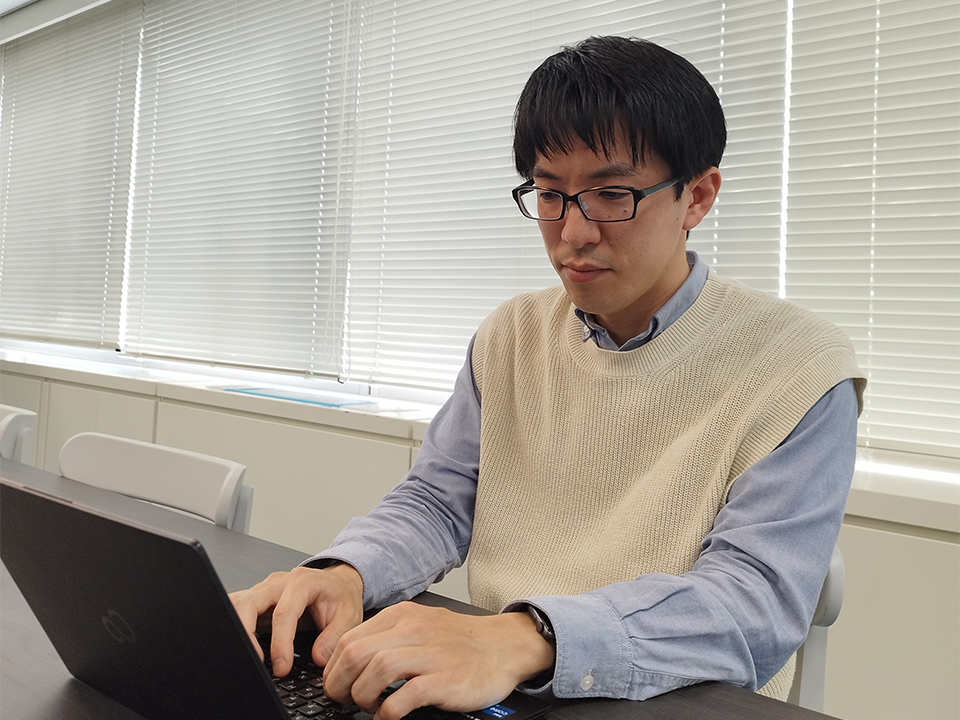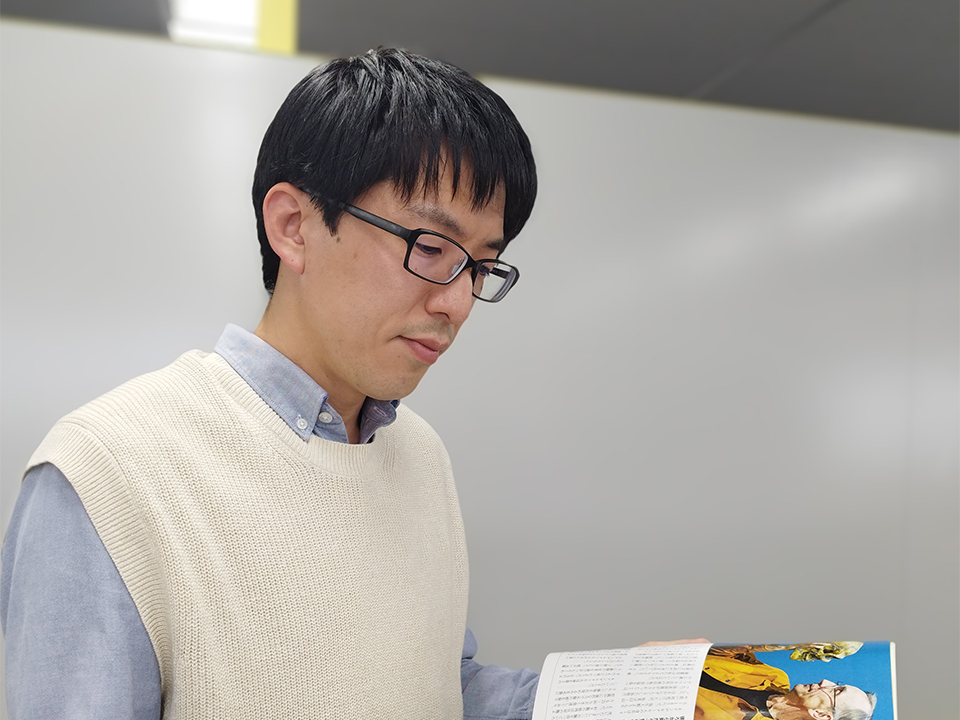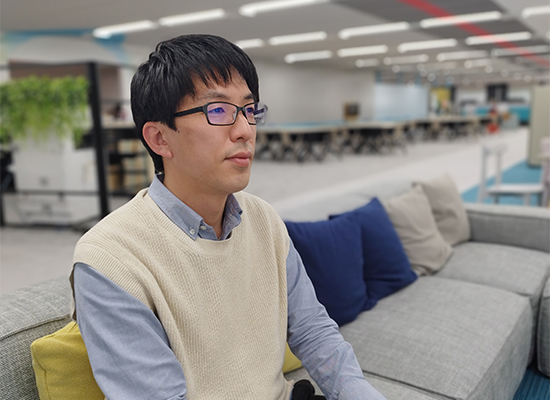A curious boy
I was born and raised in countryside of Hokkaido.
During my elementary school years, I moved schools twice due to my father's work transferring to a new location.
Fortunately, I am not a shy person and had no trouble in making new friends quickly, eventually creating many happy memories after our move to a new environment.
I particularly valued the time I spent playing soccer with them.
I was a naturally curious child, and pursued lots of different interests, such as looking for bugs and playing sledding.
This led to others telling me that I was very inquisitive!
I especially loved science and mathematics and looked forward to going to school every day.
I was fascinated by the principles of the universe and the phenomena of life and read many books about them.
These books were a real treasure trove for me, expanding my knowledge and taking me to worlds full of unknown discoveries.
After entering high school, I began to feel that it was important for my future to develop a specialization.
I was good at science and mathematics, and decided to pursue these fields, with the objective of eventually finding a job where I could apply my expertise in mathematical sciences.
Consequently, I decided to go to a university in Tokyo to further my education.
Fascinated by supercomputers
As a graduate student, I was conducting research on accelerating big data processing and was fascinated by the supercomputer “TSUBAME”, which I happened to come across by chance.
“TSUBAME” is one of the world's few GPU-equipped advanced supercomputers, and I was excited to be able to conduct cutting-edge research on it.
I enjoyed optimizing the software that runs the state-of-the-art supercomputer, and I found software research, where one can manipulate hardware, to be truly fascinating.
During this research, I also became acutely aware of how important computational infrastructure is in industry.
It was a time when data volumes were rapidly increasing due to the Internet, and it became clear that computational power was essential for processing large amounts of data.
Research on cloud computing was also getting underway.
I was convinced that computational infrastructure could contribute to the development of agriculture, manufacturing, and many other industries around the world.
After presenting my research results on software optimized for supercomputer use at an international conference, I received a surprising request from overseas.
They wanted me to release the software I had developed.
This experience made me realize that my research can be useful to society, connecting with people all around the world.
It also inspired me to devote my efforts to research and development related to the field of computational infrastructure.
R&D in deep learning
At around this time, Fujitsu had developed the supercomputer “K computer” and High Performance Computing (HPC)(*1) system with high computing power, which became a popular topic.
This is what led me to join Fujitsu, based on the expectations for future technology through this HPC research and my own interest in AI technology, which was a hot topic at the time.
Shortly after joining the company, I was assigned to the research and development of a highly efficient framework algorithm to enhance deep learning, involving the latest AI technology.
Although I found it difficult at first, I started to write source code by referring to textbooks, and gradually deepened my understanding.
In just a few months, I was able to acquire a knowledge base, from analyzing data to training models by writing source code.
I was able to apply what I learned to the framework and share it with my team members.
During my first year with the company, I gained valuable knowledge in a new area and at the same time, I also enjoyed the feeling of being able to contribute to a wider team.
Since then, I have continued to take on new challenges, one after another, growing in confidence all the time.
By developing deep learning memory efficiency technology, our team succeeded in reducing memory usage by about half.
We also developed a highly efficient GPU framework that made reinforcement learning algorithms run faster.
In addition, we successfully developed a relaxed synchronization technique for large-scale deep learning.
Achieving the world's fastest performance
The accumulation of all these research results led to an important milestone, achieving the world's highest performance in the MLPerf HPC machine learning processing performance benchmark by RIKEN, National Institute of Advanced Industrial Science and Technology, and Fujitsu (*2).
The moment the results were announced, the team was filled with excitement, and words cannot describe our joy.
Large-scale performance evaluations on the “Fugaku” supercomputer are not easy.
In a large-scale performance evaluation using more than 80,000 compute nodes simultaneously, performance does not always turn out as expected, depending on how software is implemented.
My focus was on detailed tasks such as parallel computation, performance tuning of I/O, etc., and hyper-parameter tuning of the application.
I also took on the role of managing the team’s progress and reviewing the submissions to ensure the project’s smooth progress.
Looking back, coordinating and cooperating with all parties involved was also a valuable experience.
I realized the importance of working as a team to achieve results.
A good relationship with the people you work with is essential when it comes to making a significant impact at critical times.
By trusting and respecting each other, we also increased our sense of responsibility to do our best.
Developing the world's most advanced computing technology
I am currently conducting research on next-generation computational infrastructure based on computing technology.
One of my research and development efforts is to combine Fujitsu's HPC and AI to enable fast and highly efficient materials’ exploration (*3).
To contribute to zero CO2 emissions, we are conducting joint research (*4) with Atmonia, an Icelandic start-up company, to study a new catalyst that can produce ammonia.
This is a promising clean energy source, produced only from water, air, and electricity at low energy.
I believe that we can contribute to a sustainable world by expanding our demonstration tests and considering the use of this materials search technology in fields other than the energy industry.
It is my life's goal to accelerate the resolution of social issues through research and development of the world's most advanced computing technologies.
Whenever I take on a new challenge, I am often reminded of the words of a university professor: “Be the world’s leading runner.”
This is an important value and a goal that has supported my research and development.
In order to achieve my goals, I believe that submitting and presenting papers to prestigious conferences and receiving external third-party evaluations is one of the most important indicators of my research status.
My papers have been published in many different media in Japan and other countries, but I am not satisfied with this.
One of my goals is to achieve the world’s highest level with my ongoing research.
My goal is to create the technology required for the future computational infrastructure, including the next generation of supercomputers that will make the world a better place.
Above all, I know that my work will always be inspiring in the process of conducting the research and achieving results, and I will keep on improving!








